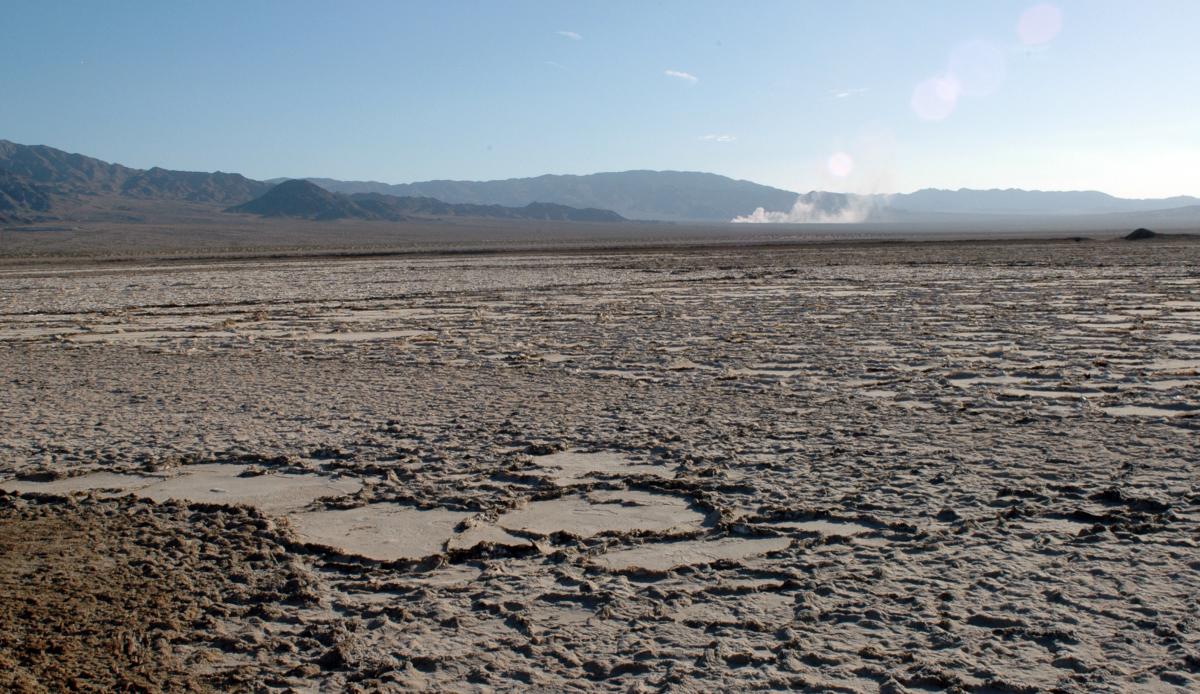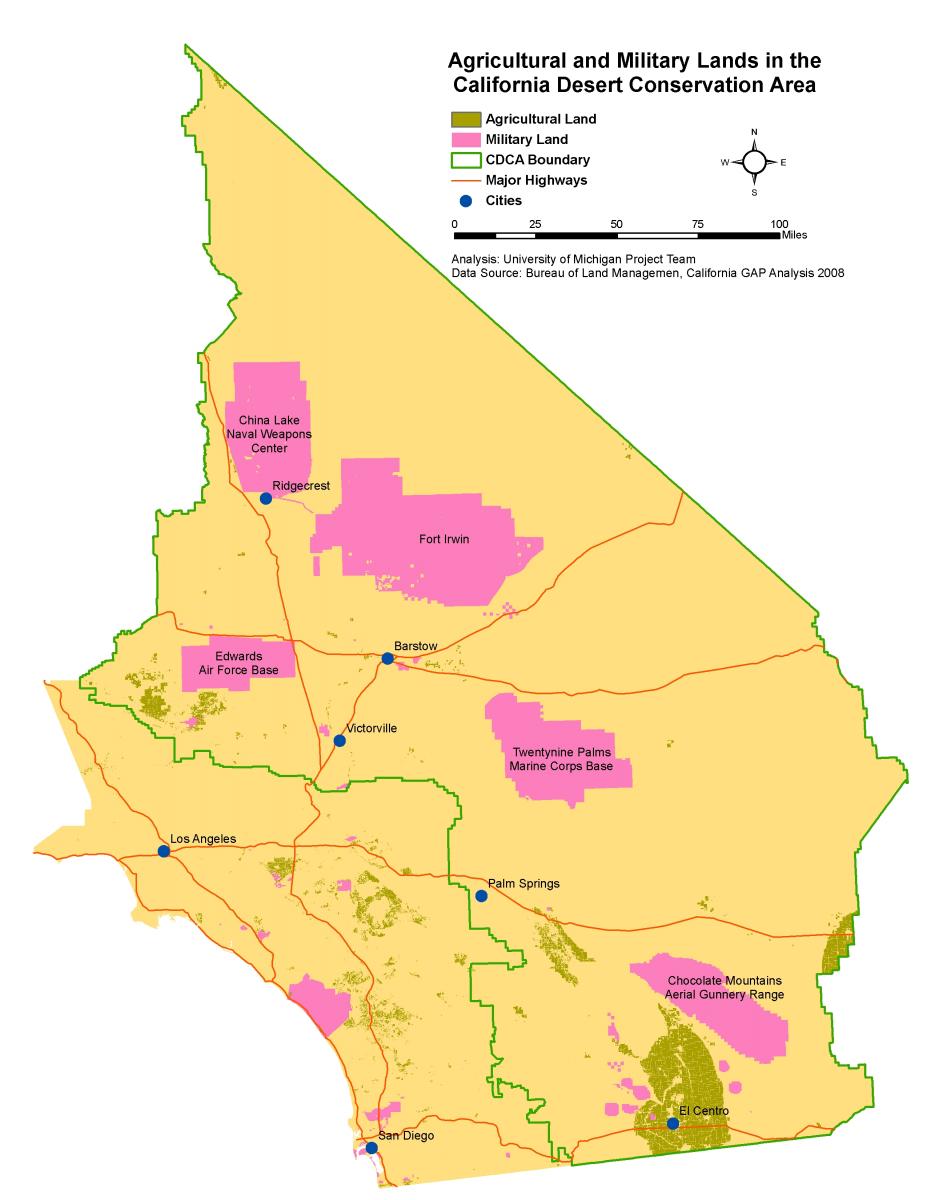Military Operations
The military has a large historic and current presence in the California desert. During World War II, the U.S. Army established several temporary camps and training grounds in the Mojave Desert and over a million soldiers have passed through these training facilities.1 Today active military bases include the

National Training Center at Fort Irwin, the Marine Corps Air Ground Combat Center at Twentynine Palms, China Lake Naval Air Weapons Station, and the Chocolate Mountain Aerial Gunnery Range (Map 1).2 Military bases can provide protection from disturbances by limiting public access to large areas, but military training exercises and infrastructure can also be detrimental to desert ecosystems. Tent sites, roads, tanks, and vehicles can compact soil, alter soil texture and drainage, remove topsoil, and decrease plant density and cover (Figure 1).3
1 J.E. Lovich and D. Bainbridge, “Anthropogenic Degradation of the Southern California Desert Ecosystem and Prospects for Natural Recovery and Restoration,” Environmental Management 24, no. 3 (1999): 309-326.
2 Lathrop, E.W. 1983. “Recovery of perennial vegetation in military maneuver areas.” In Environmental effects of off-road vehicles: impacts and management in arid regions, ed. R.H. Webb and H.G. Wildshire, 265-277. New York: Springer-Verlag.
3 J.E. Lovich and D. Bainbridge, “Anthropogenic Degradation of the Southern California Desert Ecosystem and Prospects for Natural Recovery and Restoration,” Environmental Management 24, no. 3 (1999): 309-326.

